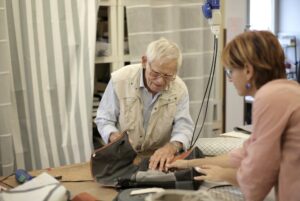Case Study: Electromedical Medical Equipment Manufacturer
- Project Name: Electromedical Medical Equipment Manufacturer Process Improvement
- Industry: Manufacturing – Medical/High Tech
- Achievement:
- Improvement of process to meet manufacturing sales goals
- Elimination of wasteful processes
The Challenge
Our client is a specialist manufacturer that creates electro-mechanical medical devices. These include highly specialized tools such as left ventricular assist devices (LVADs) – a surgically implanted pump that helps a weakened heart maintain its pumping ability. Since it manufactures a range of such products, it maintains a vertically integrated plant, meaning that all the components, such as circuit boards, precision tools, final assembly and testing all occurred under its roof.
Senior management started to notice slippage and redundancy in certain areas, for example, bills of material, pick lists and stock room transactions being over-recorded due to a complex and multi-layered ERP system. In addition, manufacturing costs were escalating, with too much money tied up in inventory.
The Lean Solution
Zerwaste, along with senior management, line managers, and selected engineers and front-line staff formed a committee to investigate, quantify, and resolve the problems before business started to become forfeited to external competitors.
The first project was inventory reduction, and the first target was the ERP process itself. We analysed bills of material and reviewed lead times, production timelines, and lot sizes, all of which appeared excessive and outdated, given the manufacturing technologies already available within the plant.
Using principles of Lean manufacturing and kaizen, we established cellular manufacturing techniques in specific areas such as cable assembly and final assembly. We held workshops on how to create and work within “natural work teams” and then involved the staff in building and assigning these teams to specific work cells.
Further improvement was achieved by establishing kanban controls within the subassembly areas, and the final assembly areas, in order to remove the redundant or non-value-adding reporting steps and stock room transactions.
We introduced the team to “Tim Woods,” an acronym for identifying wasteful habits across departments, and we discovered the following:
Transportation: cluttered warehouse and machine shop. Objects being moved many times, often to a temporary “clear” space.
Inventory: Equipment delivered to customer sites in separate shipments on different days.
Motion: Poor mapping of shop floors revealed inefficient movement of equipment, components, and people.
Waiting: Inadequate filing and processing of information caused significant delays in shipping and billing.
Over processing: The same work was being done by different people due to poor communication.
Overproduction: overhaul and repair of returned equipment was being done regardless whether it had been approved by a senior engineer.
Defects: mistakes were being made in assembly and disassembly of machinery as well as in the ordering of parts.
Skills: employee training on equipment, workplace safety or even communication technologies was non-existent due to “tight time schedules.”
From this analysis, we were able to balance shifts and eliminate bottleneck operations.
Results:
In less than six months:
- Inventory was reduced by €1.5 million
- Lead times were cut from 8 weeks to 5 days
- First pass failures were cut by 60%
- On-Time Delivery went from near zero to 100%
##



